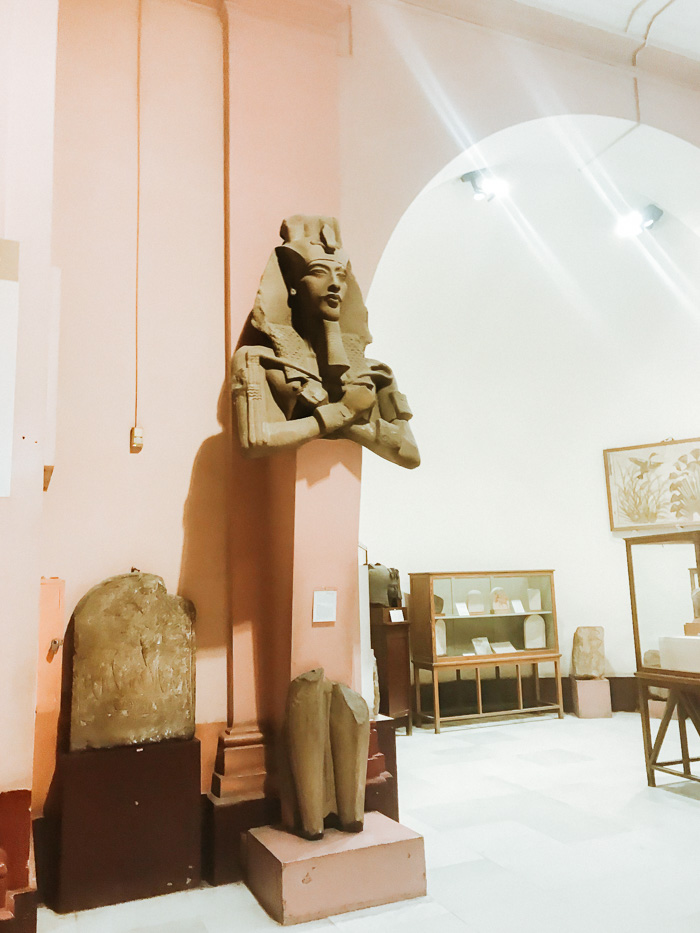
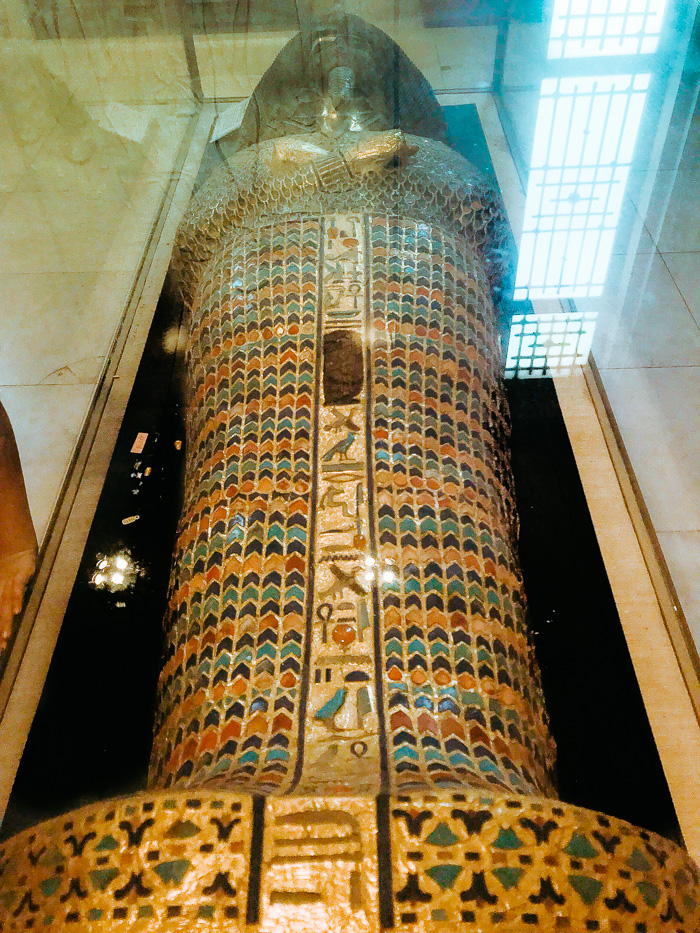
Akhenaten’s coffin lid
18th dynasty, Reign of Akhenaten (c.1351-1334 BC) Luxor
Some scholars believe yhat tutankhamen succeeded Akhenaten and Smenkhkare on the throne in Amarna, and returned to the old capital at Luxor brining back with him the mummy of his father, hidden in a woman coffin. it was reburied in the tomb number 55 in the Valley of the Kings.
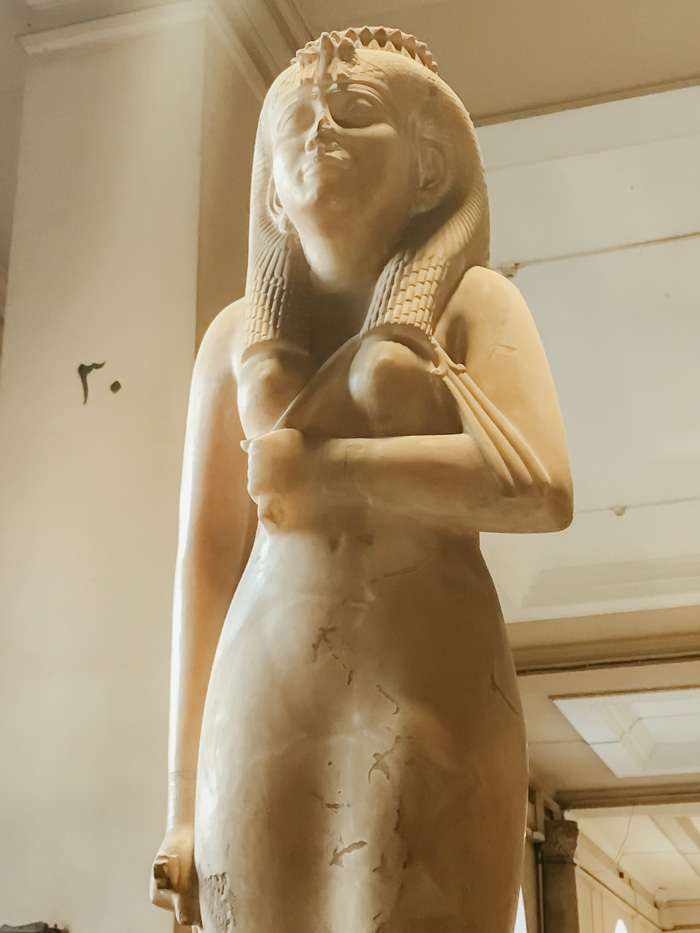
Statue of Amenirdis
Karnak- 25th dynasty (746-655BC)
The statue of Egyptian alabaster on a base of black granite represents Amenirdis. Daughter of Kashta, one of the kings of the Nubian 25th dynasty, she bore the titles of Devine Wife of Amun. This gave her as much power as the king himself, but only in the theban area.
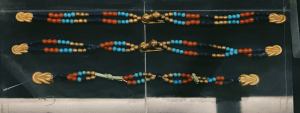
Middle Kingdom Dynasty 12, reign of Senwosret III , ca. 1872 to 1853/2 BC.
Gold, lapis lazuli, turquoise, and carnelian.
From Dahshur, Tomb of Queen Weret II
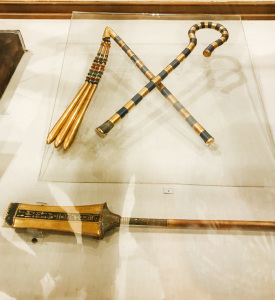

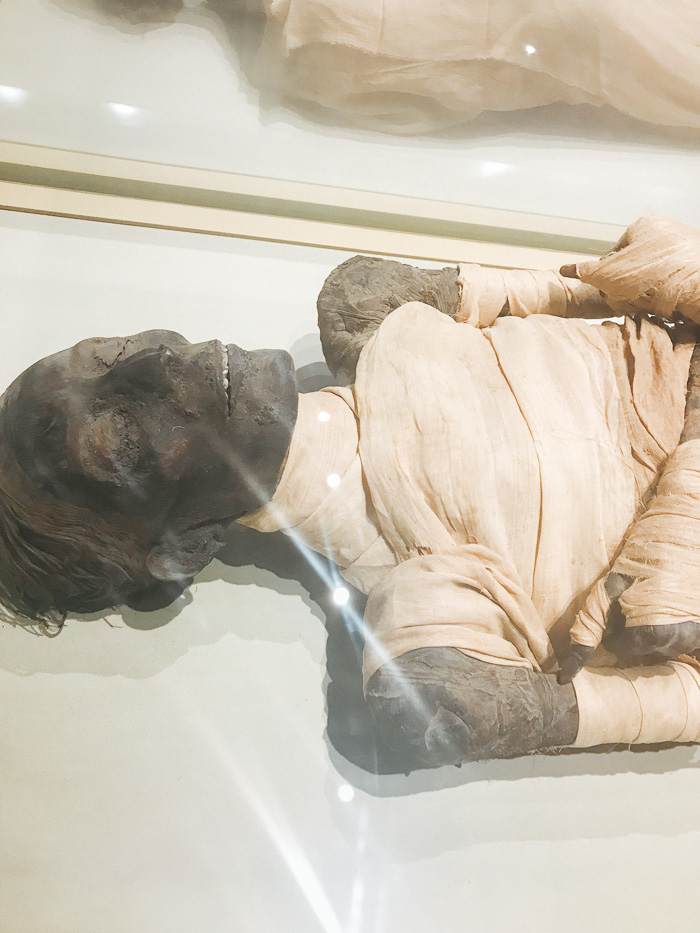
Mummy of تُحتمسThutmose IV-The Mummy Room.
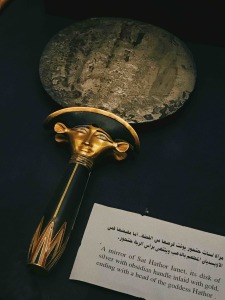

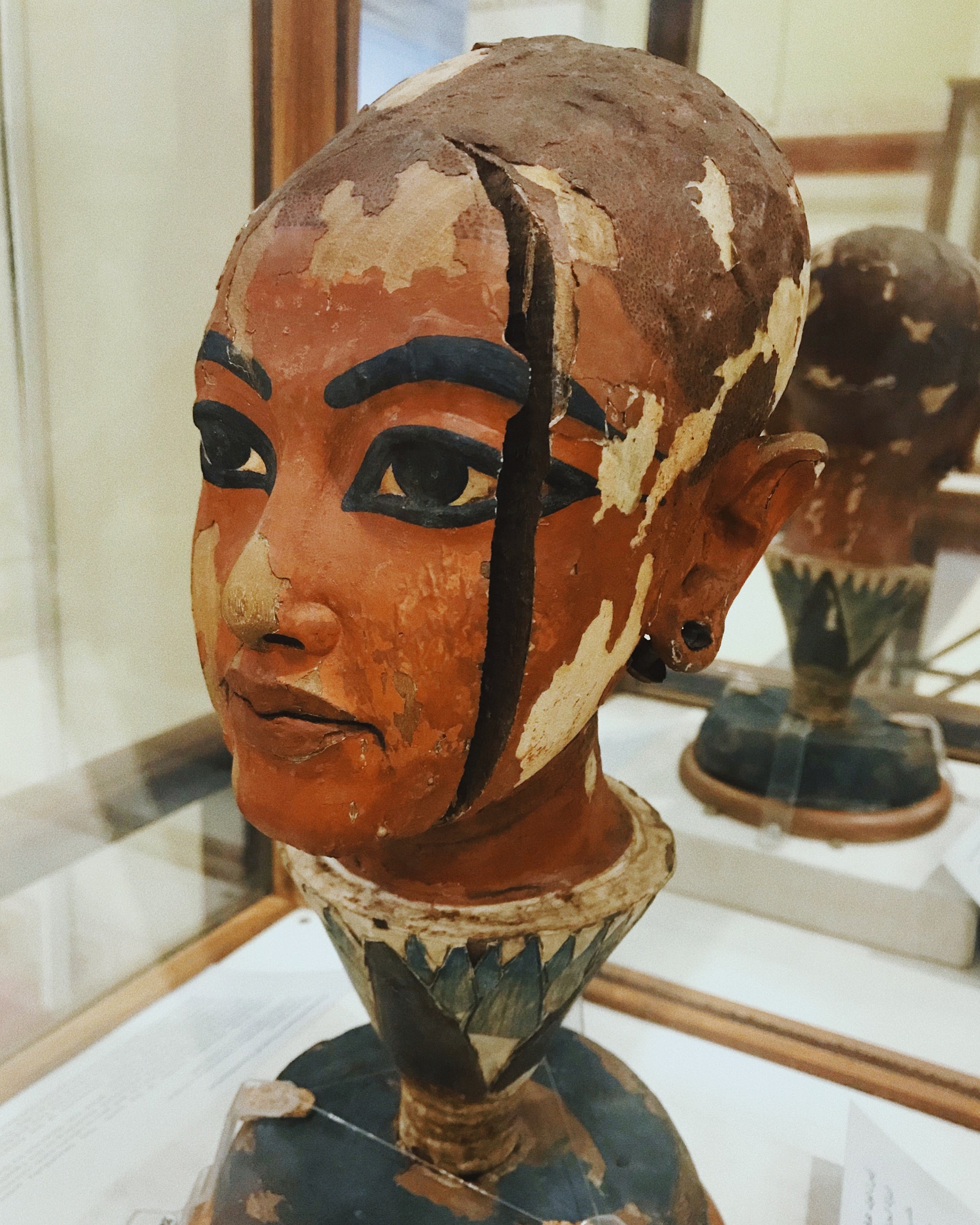
Tutankhamun painted wooden head. The object displays certain features reminiscent of the Amarna art style including the elongated head and the periced ears. The cherubic face and fleshy creased lines on the neck causes the sculpture to appear more natural and life-like. The King’s head emerges from the open lotus flower, which stems from the painted blue base, representing water.



